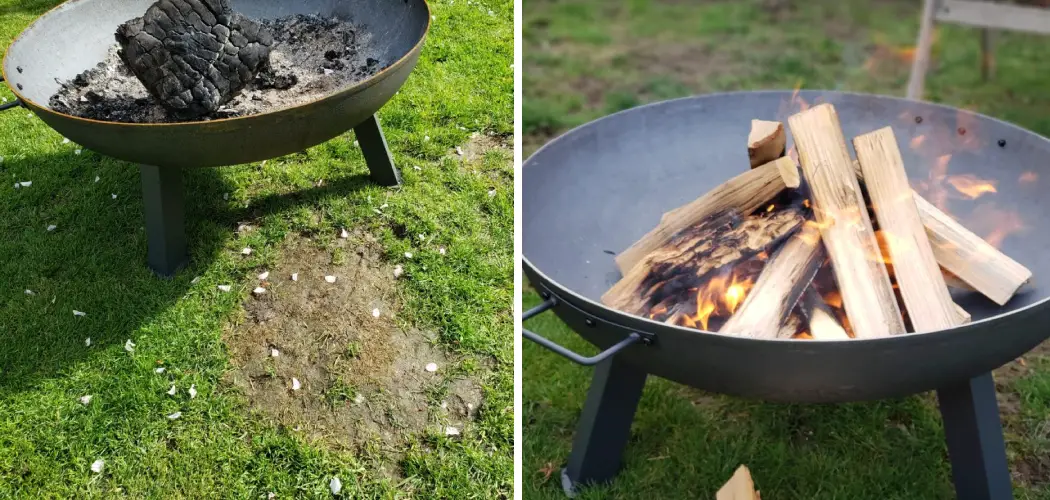As the summer months wind down and the temperature drops, there’s nothing more enjoyable than gathering around an outdoor fire pit with friends and family for some quality time under the stars. Fire pits provide a homey atmosphere, toasted marshmallows, delicious stories, and a unique way of gathering together.
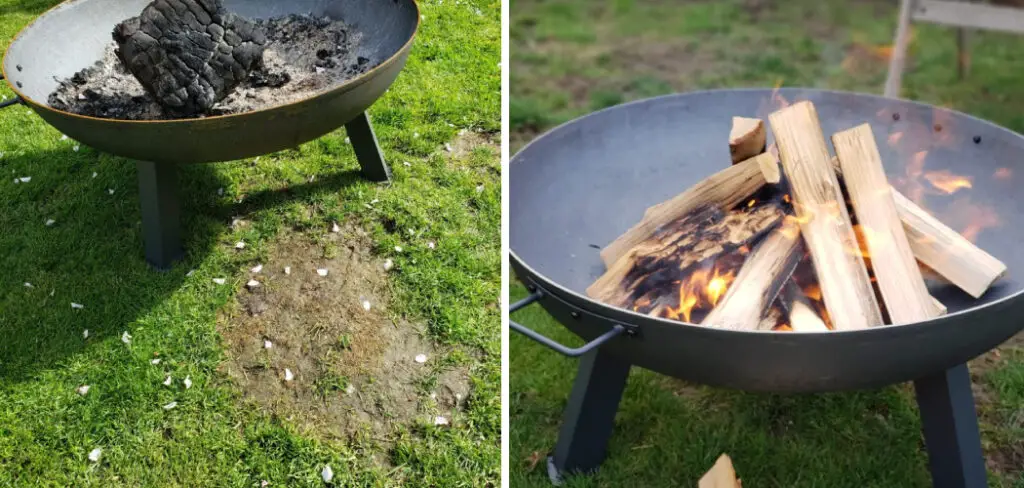
Unfortunately, though, they can also pose risks for surrounding foliage like grass if not used carefully. If you’re looking for ways to shield your lawn from potentially damaging flames, we’ve got you covered! In this blog post, we’ll be discussing how to protect grass from fire pits so you can keep your backyard safe while still enjoying all that it has to offer. Let’s get started!
10 Best Ways on How to Protect Grass From Fire Pit
1. Select a Proper Fire Pit:
Choose the right size and shape of fire pit for your yard. Avoid any open-air pits that put flames close to the lawn, as these can cause unnecessary heat damage to the grass. Instead, opt for a raised fire pit or one with a built-in wall that can contain part of the heat and keep it away from the grass.
2. Choose an Appropriate Location:
Position your fire pit in a location far away from any vegetation or trees. If you have to set up closer to grass, then make sure to use some kind of non-flammable pad that can protect the soil from heat and flames. If you can, try to keep the fire pit on a concrete or stone surface.
3. Prepare Your Fire Pit Area:
Before you set up the fire pit, be sure to prepare your area by clearing away any debris that may have accumulated in the area. This includes leaves, twigs, and other combustible materials. Make sure to check around the perimeter and ensure there will be no sparks that could accidentally ignite nearby grass.
4. Create a Barrier:
One of the best ways to protect your grass from fire is to create a barrier between it and the flames. You can do this by using a metal screen or heat-resistant material around the fire pit. This will act as an extra layer of protection, ensuring that the fire’s heat and sparks won’t spread to your lawn.
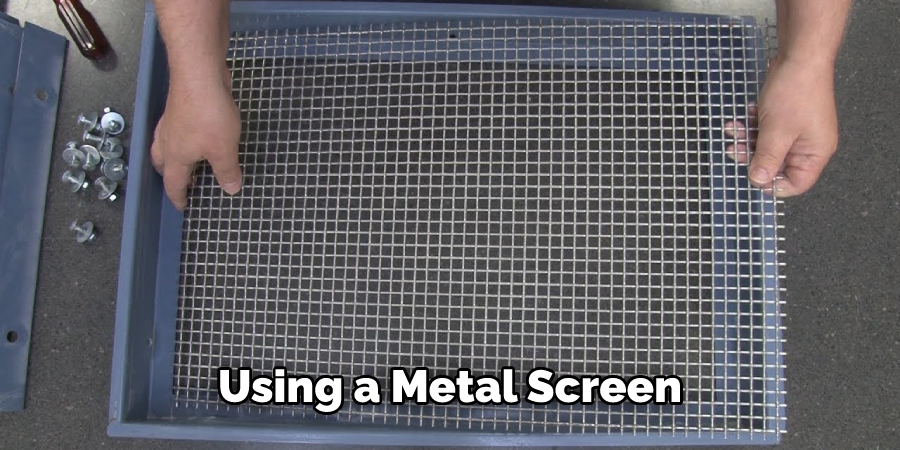
5. Keep a Fire Extinguisher Handy:
It’s always a good idea to have a fire extinguisher nearby in case of an emergency. Make sure it is within easy reach so that you can quickly put out any unintended grass fires. You should also keep a bucket of water close by to help put out flames if needed. This method is particularly important if you’re having a large gathering around the fire pit.
6. Ensure Proper Airflow:
Make sure your fire pit has adequate ventilation and airflow so that the heat is not too concentrated in one area. This will help keep the temperatures down and stop any embers from flying out of the fire pit and onto nearby grass. You can also add some moisture to the air by placing a garden hose in the vicinity.
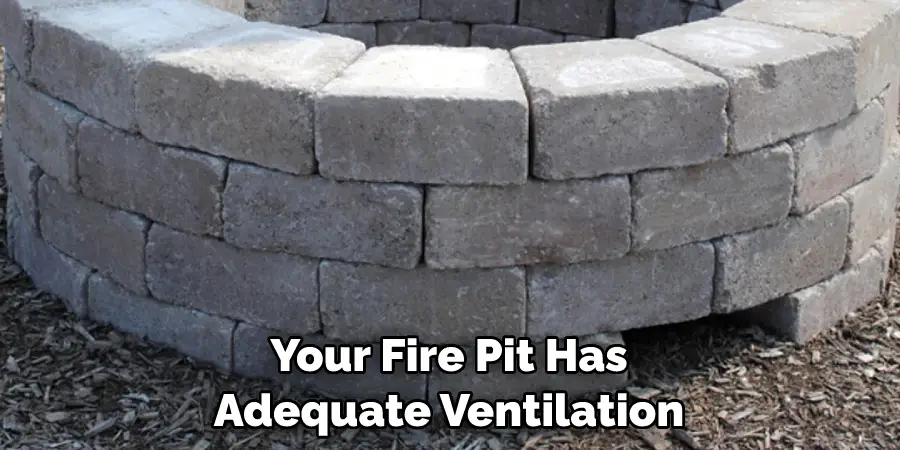
7. Monitor Sparks and Flying Ashes:
Keep an eye on any sparks or flying ashes that may be coming out of the fire pit. These can potentially land on grass and cause it to ignite, so make sure you have someone monitoring this at all times during your gathering. If you do spot any sparks, immediately extinguish them using a fire extinguisher or water.
8. Dispose of Ashes Responsibly:
Never leave ashes sitting in the fire pit as they can still contain heat and spark up grass fires. Make sure you dispose of all ashes after your gathering is over. A good method is to sprinkle them with some water before disposing of them in a metal container that is far away from any vegetation.
9. Put Out the Fire Before You Leave:
Always make sure to completely put out the fire before leaving your gathering. Never leave a smoldering fire unattended as it can quickly spread and pose risks to surrounding grasses. Make sure you pour plenty of water on the fire pit and use a fire extinguisher if needed.
10. Regularly Mow Your Lawn:
Finally, make sure you regularly mow your lawn so that it doesn’t become overgrown. This is important as tall grass can easily catch on fire from sparks or flying ashes. Keeping your lawn well-maintained will help ensure that it remains protected from fire pits.
By following these tips on how to protect grass from fire pits, you can enjoy your gatherings without having to worry about accidental fires. Just remember to always be careful and aware of the risks that come with open flames! Have fun and stay safe out there!
Additional Tips and Tricks to Protect Grass From Fire Pit
- Make sure to extinguish any remaining embers in your fire pit before leaving the area, as these can reignite and cause damage to nearby grass or foliage.
- Consider using a heat-resistant ground cover such as gravel, brick, stone, or concrete around the areas of your fire pit that come into contact with the grass. This will provide an additional layer of protection and limit exposure to potential damage.
- Keep your fire pit away from any overhanging tree branches, as these may catch fire if they come into contact with sparks or embers.
- Make sure that you are using a fire pit that is specifically designed for outdoor use, as indoor fire pits may emit higher levels of heat than their outdoor counterparts and cause more damage to the grass.
- Be mindful of windy conditions, as these may cause sparks from your fire pit to travel farther distances and potentially ignite nearby foliage.
- Check with your local authorities for any regulations regarding the use of fire pits, as certain areas may have specific laws that need to be followed in order to protect grass from fire pit exposure.
- Always be sure to clean up any ashes that accumulate around your fire pit after each use, as these can contain embers that can reignite and cause further damage.
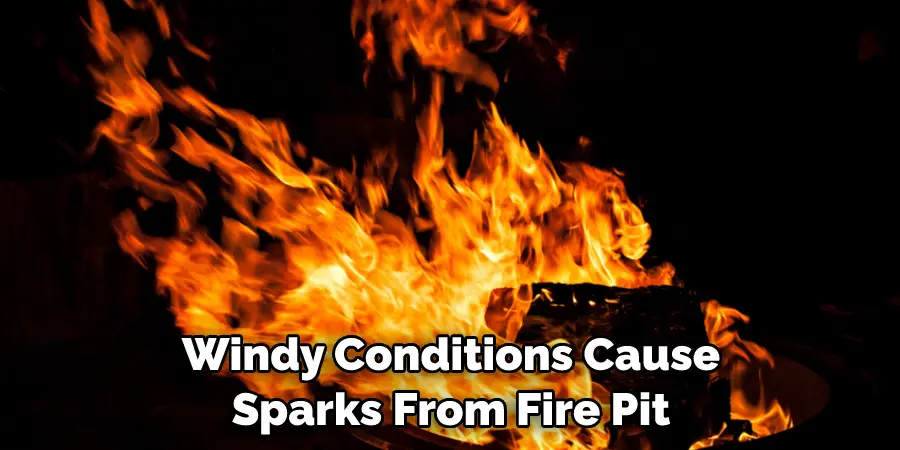
By following these simple tips and tricks, you can ensure that your grass will remain safe from the potential dangers of a fire pit! Not only will this help protect your grass, but it can help prevent any potential accidents that may occur as a result of improper fire pit usage. So stay safe and enjoy the warmth of your fire pit while protecting your grass!
Precautions Need to Follow for Using Fire Pit on Grass
- Make sure the fire pit is placed on an even, level surface in order to ensure that it will not tip over and cause sparks or embers to fly out and potentially ignite nearby grass or foliage.
- Use a spark screen to contain any sparks that may escape from your fire pit during use, as these can travel long distances and potentially ignite nearby grass.
- Inspect your fire pit regularly for any signs of wear or damage that may create weak spots and cause sparks to escape from the fire pit.
- Establish a safe zone around your fire pit when it is in use, as this will help protect any surrounding foliage from potential sparks and embers.
- Only use wood or charcoal that is specifically designed for outdoor fire pit use in order to minimize the amount of sparks and embers created.
- Keep a bucket of water or sand nearby when using your fire pit, as this will help you quickly extinguish any sparks or embers that may escape from the fire pit during use.
- Use caution when adding fuel to your fire pit, as this can cause a sudden burst of sparks and embers that could potentially ignite nearby grass.

By following these simple precautions, you can help ensure the safety of your grass when using a fire pit. So take the necessary steps to prevent any potential danger, and enjoy the warmth and light of your fire pit without worry!
Things You Should Consider to Use Fire Pit on Grass
- Be aware of the flammability of the grass in your area and take appropriate precautions if needed. Certain types of grass are more susceptible to catching fire than others, so make sure you keep this in mind when using a fire pit on grass.
- Check for any local regulations regarding the use of fire pits on grass before you start your gathering. It is important to be aware of any restrictions in the area that may affect how you can use your fire pit so that you don’t inadvertently cause damage or endanger anyone.
- Have a water source close by in case of an emergency to help extinguish any potential fires that occur from sparks or embers coming into contact with the grass.
- Monitor the wind direction during your gathering and be sure to keep the fire away from any overhanging tree branches or foliage, as these can easily catch fire if sparks come into contact with them.
- Always use caution when adding fuel to your fire pit, as sudden bursts of sparks and embers can occur when the fuel is added.
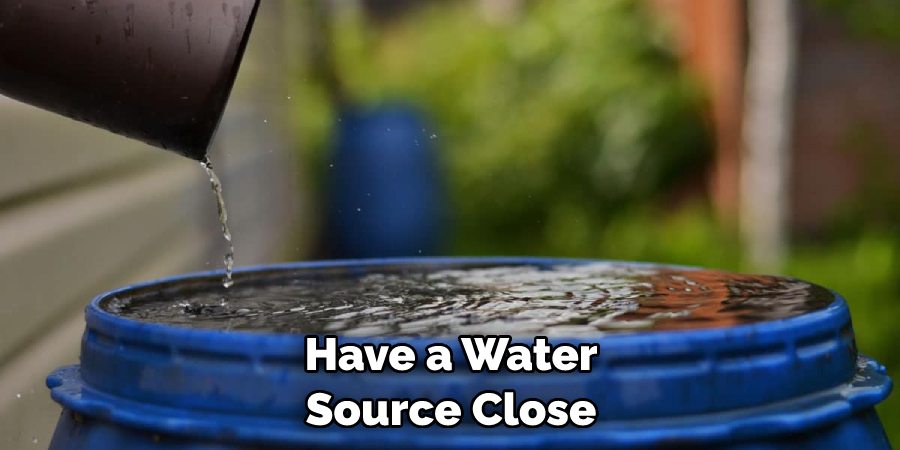
By taking these simple precautions into consideration, you can ensure that your fire pit gatherings are safe and enjoyable for all! So keep these tips in mind the next time you’re using a fire pit on the grass to help protect the surrounding area and have an enjoyable gathering with friends. Enjoy!
Frequently Asked Questions
How Close Can I Have My Fire Pit to the Grass?
It is important to keep your fire pit at least 10 feet away from any overhanging foliage or tree branches in order to ensure that it doesn’t catch on fire. Additionally, you should also make sure that your fire pit is placed on a level surface and not placed directly on the grass. This will help prevent any sparks or embers from coming into contact with the grass and causing an unintended fire.
What Is the Best Way to Put Out My Fire Pit?
The best way to ensure that your fire pit is completely extinguished after use is to let it burn until all of the wood has been consumed. Once the fire has burned out, use a small shovel or rake to spread out any remaining ashes and embers.
Finally, pour water over the area until all of the ashes and embers have been extinguished. Make sure you dispose of any remaining ash or soot properly in an appropriate receptacle.
How Often Should I Clean My Fire Pit?
It is important to clean your fire pit regularly in order to ensure that it is in good working condition and free of any potential debris or soot buildup. It is recommended that you clean your fire pit after every use, as this will help prevent any sparks or embers from accidentally catching on fire. Additionally, be sure to inspect your fire pit for any signs of wear or damage that may cause sparks to escape during use.
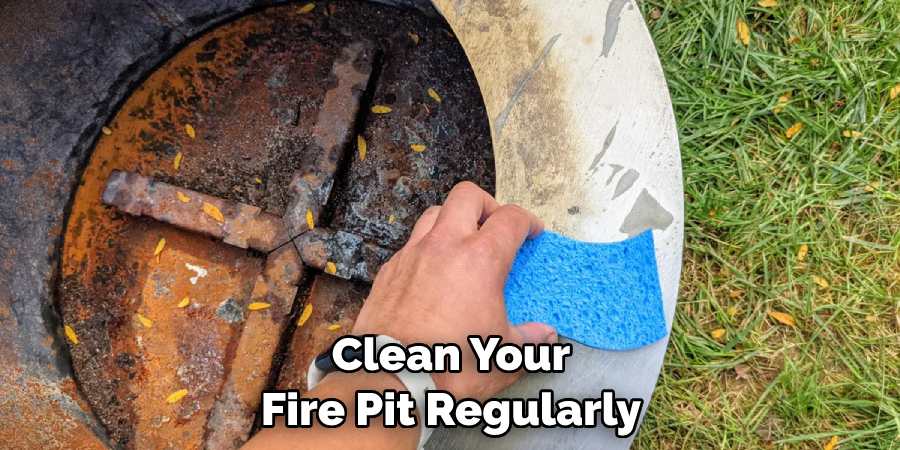
Conclusion
It is essential to take steps to protect our grass from the fire pit to maintain a healthy and happy yard. We hope that following these easy steps will help you protect your own grass and make your outdoor experience much more enjoyable. Remember, by respecting the area around the fire pit, we can prevent fires from spreading in the event of an accident.
Be sure to check with local authorities on the legal and safety concerns regarding fire pits. Ultimately, keep your fire under control―by protecting your grass―your yard will remain lush and vibrant all summer long. Get out there and have some outdoor fun, but be mindful to stay safe when it comes to utilizing fire pits! How to protect grass from fire pits?
About
Outdoor Fixes is a distinguished figure in the world of Diy design, with a decade of expertise creating innovative and sustainable Diy solutions.
His professional focus lies in merging traditional craftsmanship with modern manufacturing techniques,
fostering designs that are both practical and environmentally conscious. As the author of diy,
outdoorfixes delves into the art and science of outdoorfixes-making, inspiring artisans and industry professionals alike.
Education RMIT University
(Melbourne, Australia) Associate Degree in Design (Outdoor Fixes) Focus on sustainable design, industry-driven projects,
and practical craftsmanship. Gained hands-on experience with traditional and digital manufacturing tools, such as CAD and CNC software.
Nottingham Trent University
(United Kingdom) Bachelor’s in outdoorfixes.com and Product Design (Honors) Specialized in product design with a focus on blending creativity with production
techniques. Participated in industry projects, working with companies like John Lewis and Vitsoe to gain real-world insights.
Publications and Impact
In diy, Outdoor Fixes his insights on indoor design processes, materials, and strategies for efficient production.
His writing bridges the gap between artisan knowledge and modern industry needs, making it a must-read for both budding designers and seasoned professionals.

